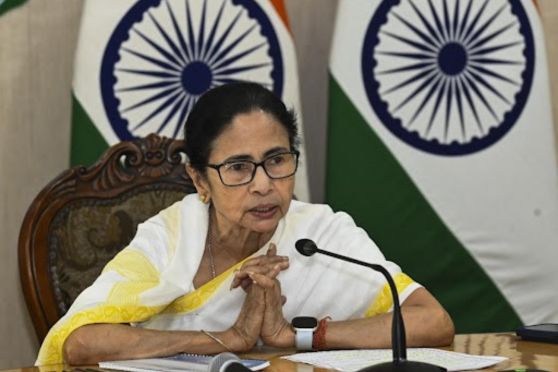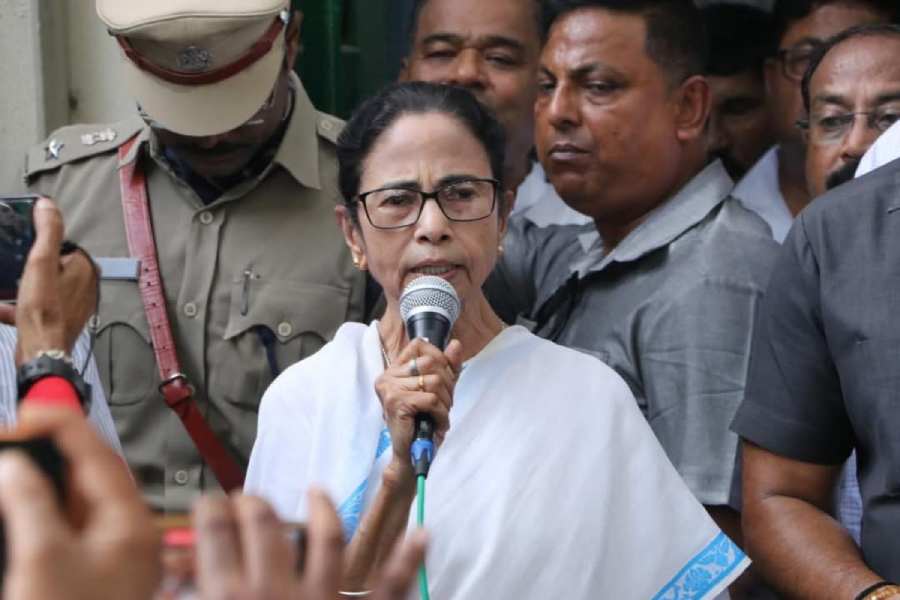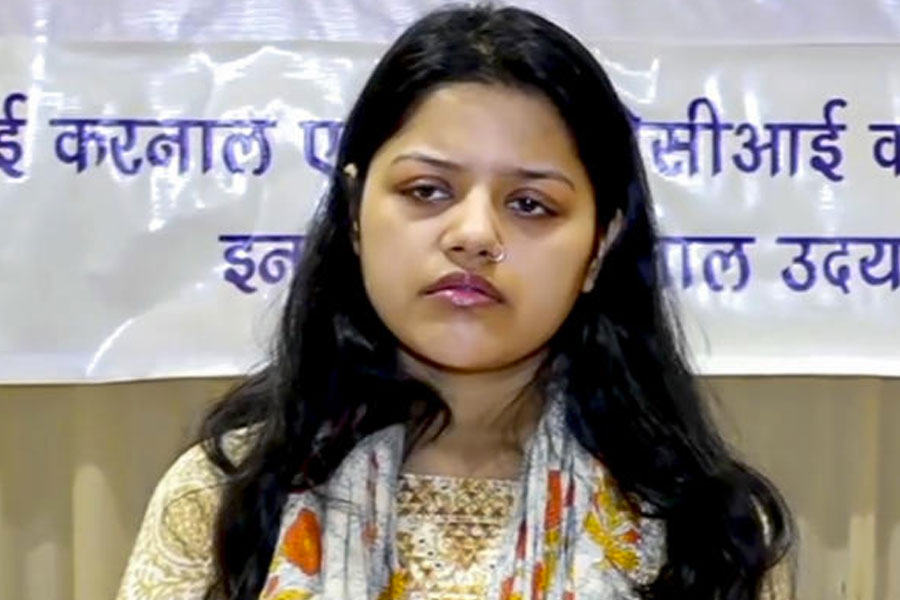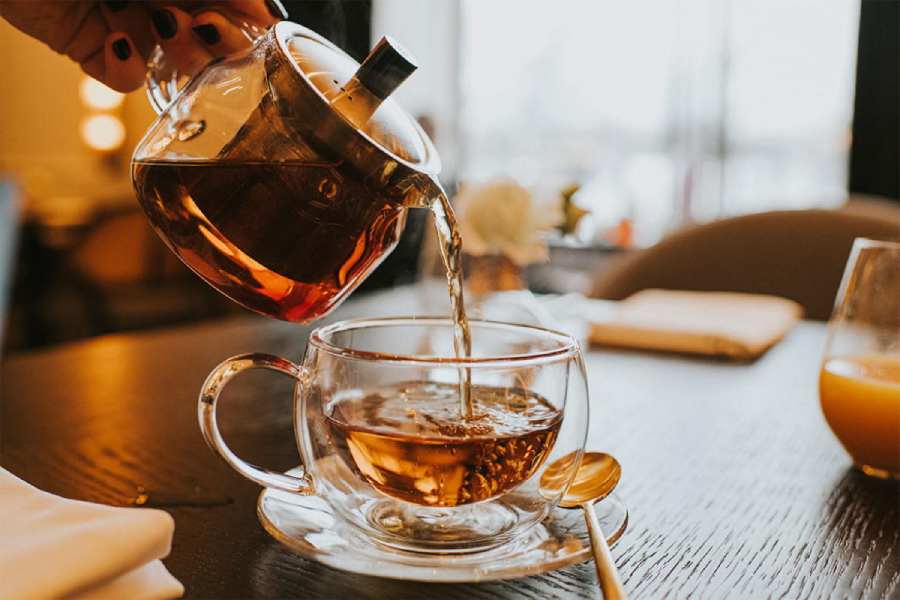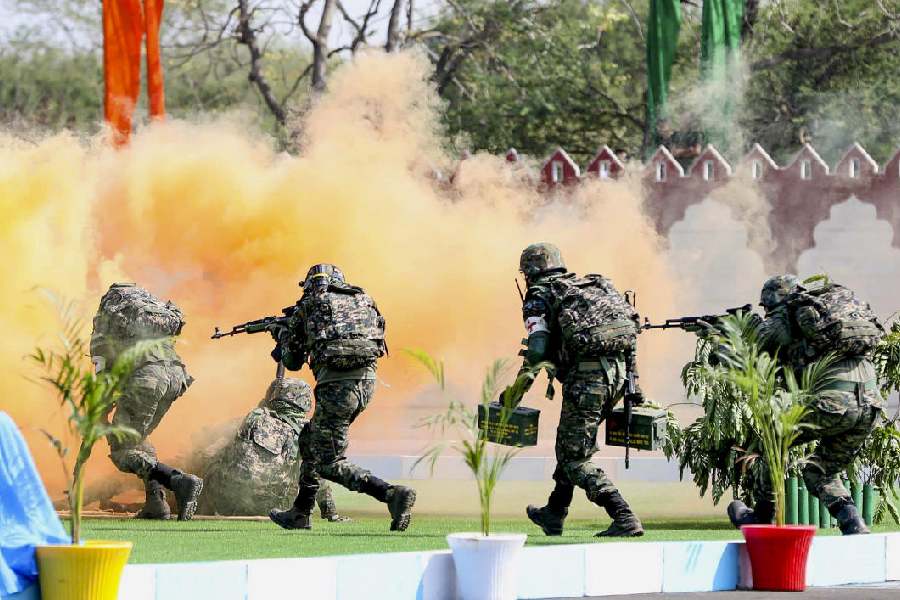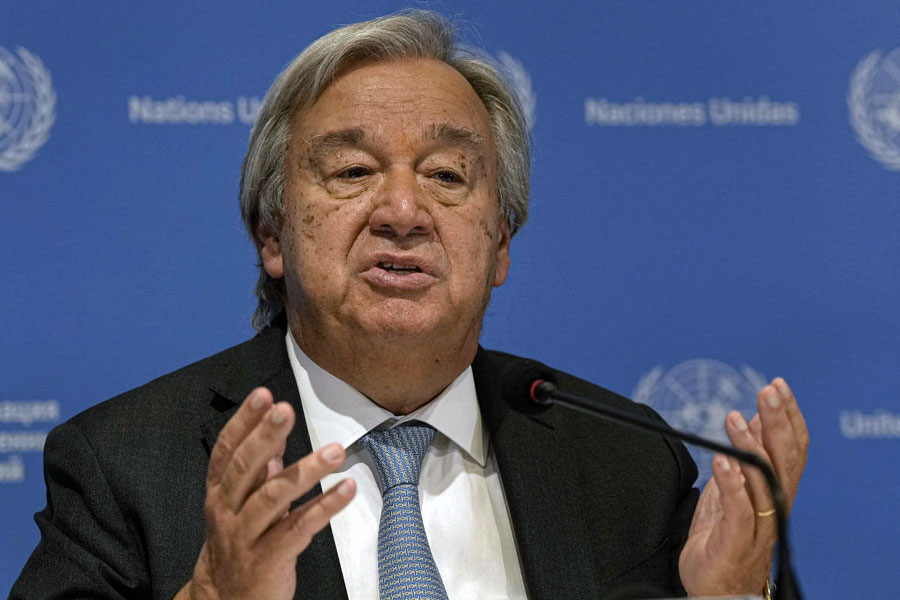 |
| An artist’s impression of the Sakyamuni Project |
Gangtok, Nov. 9: A relic of the Buddha from Thailand for the Sakyamuni Project is set to arrive here on November 24.
Somdet Phra Nyanasaamvara, the 19th Supreme Patriarch of the Kingdom of Thailand, has offered the ringsel for the project — the construction of a 130-feet high statue of Buddha in Rabong, 30km from here. The Supreme Patriarch is the head of the Buddhist monks in the Southeast Asian country.
Rinzing Chewang, the member secretary of Sakyamuni said, a Thai team — comprising a host of monks and high priest Jamnian Chonsakhorn — will come to Bagdogra on November 24 via Calcutta and will be driven by road to Sikkim the same day.
“We want to invite all monks, devotees and well-wishers to welcome the group at Rangpo (the town on the Bengal-Sikkim border) and along the way to Rabong. They should also attend the ceremony to hand over the relic the next day,” said Chewang.
The relic will be housed at the newly built Karma Thekchenling Monastery at the Mane Chokerling complex in Rabong till the completion of Sakyamuni sometime next year.
Relics of the Buddha are set to come from Myanmar, Cambodia, Laos, Vietnam, Japan and South Korea also for the Sakyamuni project.
They are likely to give the much-needed significance to Sakyamuni, the ultimate aim of which is to add Rabong to the Buddhist and religious circuit and draw pilgrim-tourists.
The work on the statue started in 2006, the 2550th birth anniversary of Buddha or Sakyamuni. The state government in a policy decision had observed the anniversary throughout the year in Sikkim.
Slated to be a landmark in Sikkim's effort to unite tourism and religion, the Rs 30 crore project has chief minister Pawan Chamling as its chief patron and will be funded mostly by the state government. The construction is being carried out under the aegis of MLA of Ralong and state urban development minister D.D. Bhutia.
“We would like to thank the Supreme Patriarch of Thailand for offering us this most precious relic which will give the much needed boost and significance to the site as a major pilgrim and religious centre,” Bhutia said.
Legend has it that after the Buddha's body was cremated at Kusinara (now in modern Uttar Pradesh) in 544/543 BC, the fragments that remained were divided into eight portions. These were then sent to various kingdoms to be enshrined in stupas in what is today’s Buddhist Asia.
It is believed that the relics, tiny pearl-like globules, possess powers of multiplication and embody the spiritual knowledge, teachings, realisations or living essence of the Buddha. They are taken as evidence of his enlightenment and spiritual purity.


